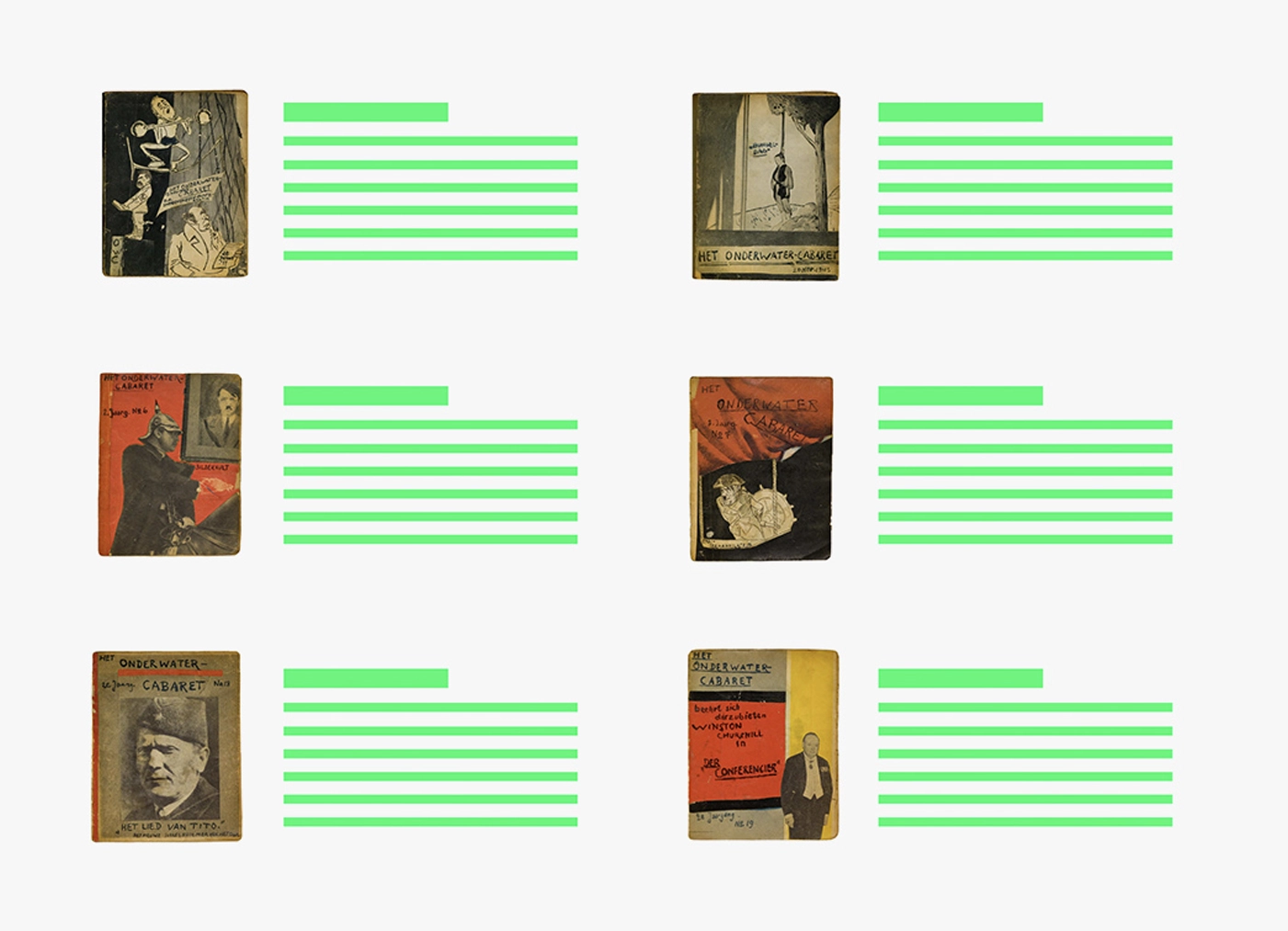


March 4, 1944
Introduction to the context
Six absurdly optimistic newspaper reports on the progress of the war in Ukraine inspired Curt Bloch to create his rhyming Perspectives at the Eastern front. After the Soviet army had already defeated the German troops in Stalingrad and was now threatening to encircle them in the bend of the Dnieper river, the hopeless situation of the Germans could no longer be hushed up. Hitler’s megalomaniacal “Lebensraum strategy” had proven to be “just talking in space” that would fail against the harsh reality.
The situation in Poland, referred to as the “Governorate General” by the German occupiers, appeared quite different to the well-informed Curt Bloch than described in Nazi propaganda. He had long stopped believing the lies of the Germans. If he detected a false note in their presentations, and especially if they vehemently denied something “with clarion calls,” he was sure that “somewhere the shoe” pinches.
Curt Bloch’s cover picture of this OWC edition is linked to A “Grimm” Fairy Tale. Using the example of Leipziger Straße, a luxury shopping street in Berlin – where, among others, the Jewish department store Tietz was located – he shows the before and after of the German capital under Nazi rule. While the shop windows emptied, the beautiful street was reduced to rubble, and its residents either starved or died heroically elsewhere. However, “Herr. Göring kept his belly” and “No hair is yet harmed on the Führer.”
Curt Bloch’s poem The Finns are faltering, is about the threat from the unstoppable advance of the Russians. While the Finns had long relied on the victory of their German supporters and had completely ruled out surrender, a newspaper article from February 16 reported alleged peace negotiations. The following day, Helsinki was bombed by the Russians, and from a Finnish perspective, Bloch regretted the cooperation with the Germans: “thanks to these villains we find ourselves in a bad situation.”